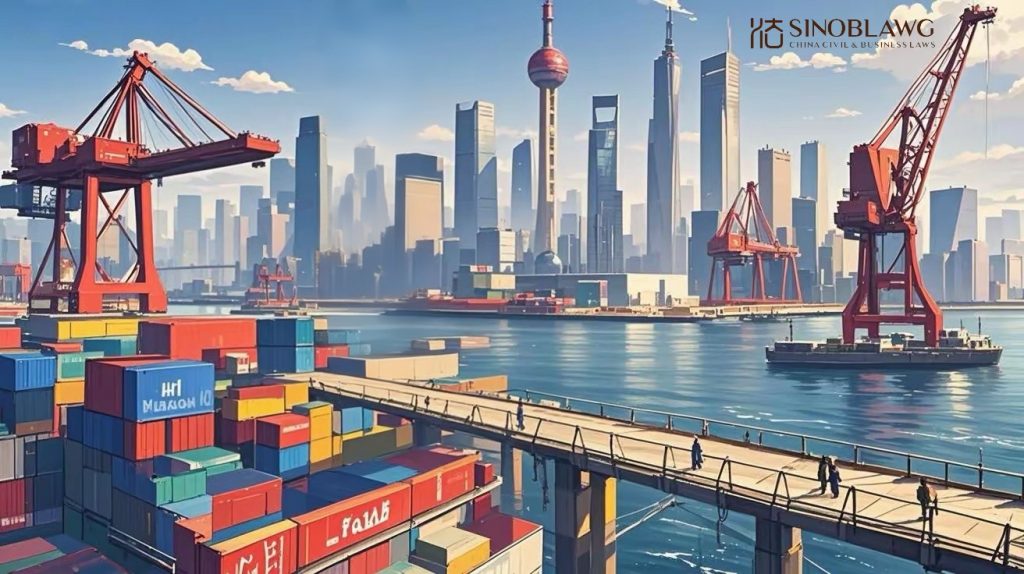The State Council passed a comprehensive plan to set up a free trade experiment zone in Shanghai on August 26, 2013 [see our analysis of the New Rules for Commercial Factoring in Shanghai Free Trade Zone] . Few months later, how to evaluate the real impact of Shanghai pilot FTZ in China ?
The Shanghai FTZ is made up of three extant bonded areas – Yangshan, Waigaoqiao including a logistics park and Pudong Airport Area. In total, Shanghai Pilot Free Trade Zone covers 28 square kilometers. Many companies already have operations in this region; office and industrial spaces are still available and have shot up in rent price.
The First Free Trade Zone in Mainland – A first opening
The central government saw Shanghai’s free-trade zone launched. As a pioneer in this area, wider convertibility of the yuan and market-oriented interest rates are applied. Pricing of currencies can be done by financial institutions based on market needs. The plan which allows Shanghai to take the lead in testing wider convertibility of the yuan may also put Shenzhen’s special economic zone in Qianhai – promoted earlier as a testing ground for yuan globalization – in the shade. Shanghai Free Trade Zone attracts various businesses to locate their business agent in this area. For example, CitiBank had got a license to develop new business in FTZ. Microsoft announced that they would build their first factory in FTZ and began to sell X-box in mainland.
Further Opening to the World
The FTZ means greater benefits for companies. For example, in the past, for a materials processing enterprise, for instance, had to pay taxes on imported materials and could only get a tax refund after exporting the finished product. For high-volume, small-margin enterprises, this resulted badly in cash-flow pressure because such a process often entailed a wait of several months for the tax rebate. Now import tariffs can be eliminated for processing companies, and manufacturers can enjoy a tax rate of with a reduction of 15 percent. These measures will encourage business development by reducing costs and red tape.
The FTZ took Hong Kong as its model in supporting trade companies. The aim is to support industry and buffer the impact of the rising labor costs on the companies by granting them preferential tax policies. In recent years, the rising cost of labor and labor inputs has eroded many foreign companies’ profits in China. The establishment of FTZs like the one in Shanghai is expecting to help China to win back its competitive advantage by reducing companies’ expenditure on administrative procedures and other regulatory hurdles. The result could be reinvigorated capital flows into the country.
Fast Track to the China Market
Foreign investors in the Shanghai FTZ are not required to seek government approval before setting up shop as long as they operate outside of industries on a “no-go” list. The aim of the FTZ is to establish the practice of post entry supervision and pre-entry “no-go” list management as a new investment access and management system, in place of the old government examination and approval system, reiterated Wang Xinkui, director of the Counselor’s Office of the Shanghai Municipal Government at the Chinese Economists 50 Forum on August 10, 2013.
The “no-go” list is a way of telling industry and business what not to do, rather than what to do. Such lists are common practice nowadays, and are an innovative way to facilitate global trade negotiation and regulations. They had been adopted in 77 countries at the time of writing.
The “no-go” list implies a change in supervisory practices. It should simplify the administrative procedures for foreign investment inflows, rein in discretionary state power and result in more transparency and less uncertainty. The change of policy will attract foreign investment and improve the efficiency of business operations, he added. The reform means that foreign companies in the FTZ can go through the same procedures in industrial and commercial registration, company establishment and alteration, project management and administration as domestic companies.
Expanding Free Trade Zones in China
The Shanghai FTZ may exert an adverse impact on other free trade areas in Asia, such as Hong Kong and Singapore. At present, a high proportion of foreign trade with China’s mainland transfers through Hong Kong. This situation may change after Shanghai has set up its own FTZ. Till now, Tianjin, Nansha District in Guangzhou, Xiamen, Zhoushan and a number of other cities have already submitted tentative plans for setting up free trade zones.
Shanghai FTZ is a symbol of China`s first step in ensuring the mainland enjoys continuous economic prosperity. The next step will be to ensure that the prosperity is enjoyed by inland regions as well as coastal areas.
By SJ Grand




Comments